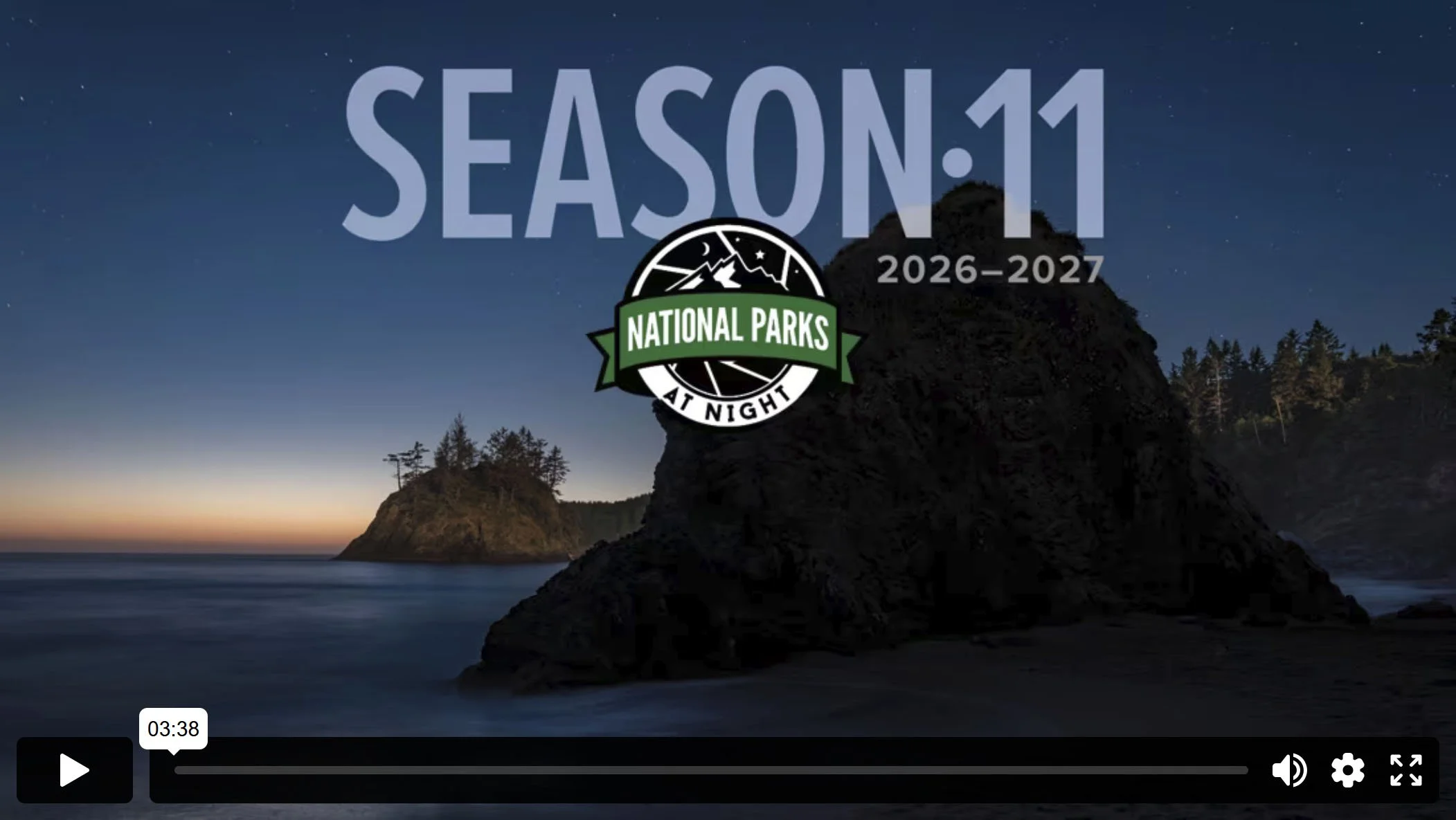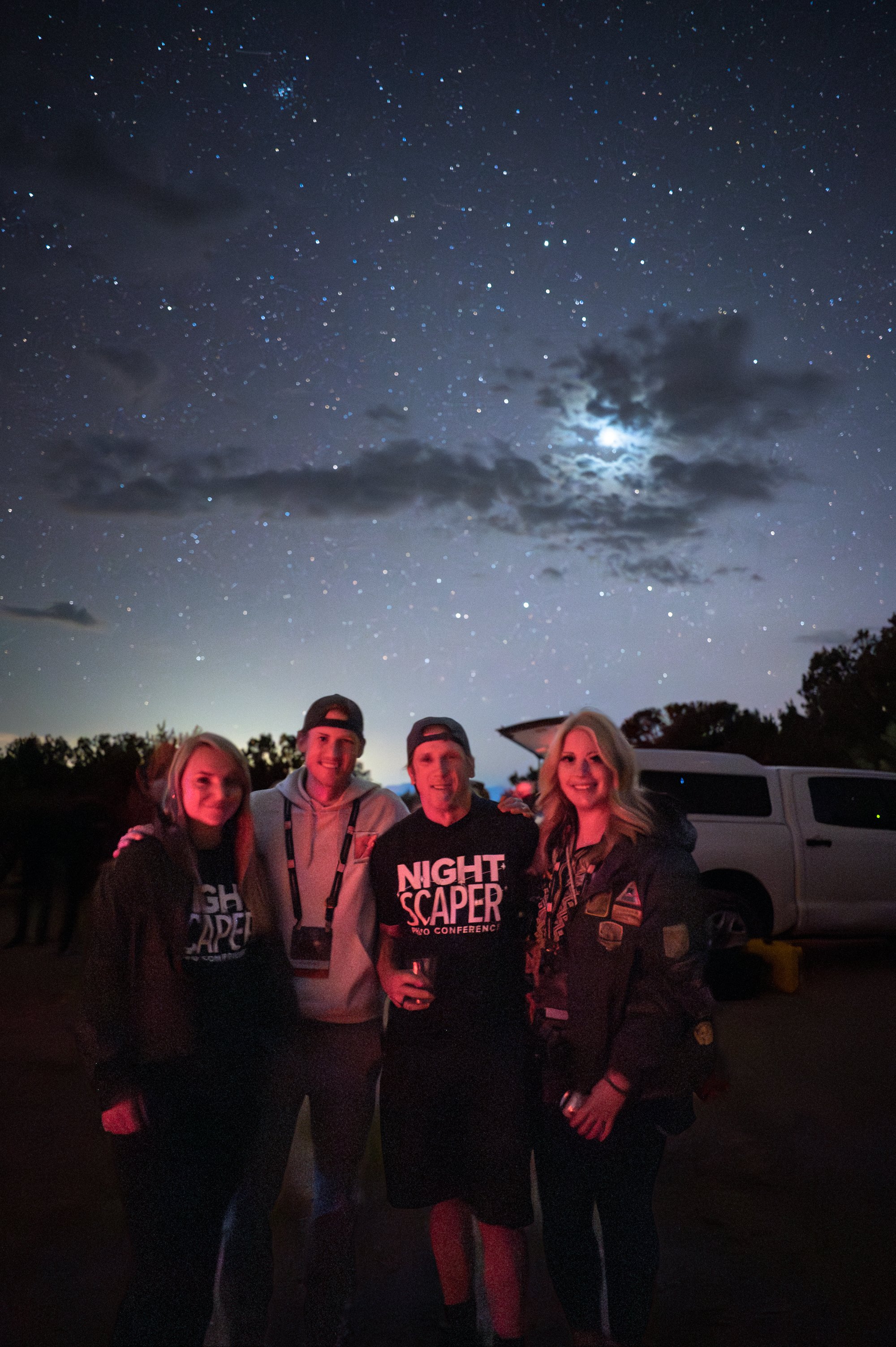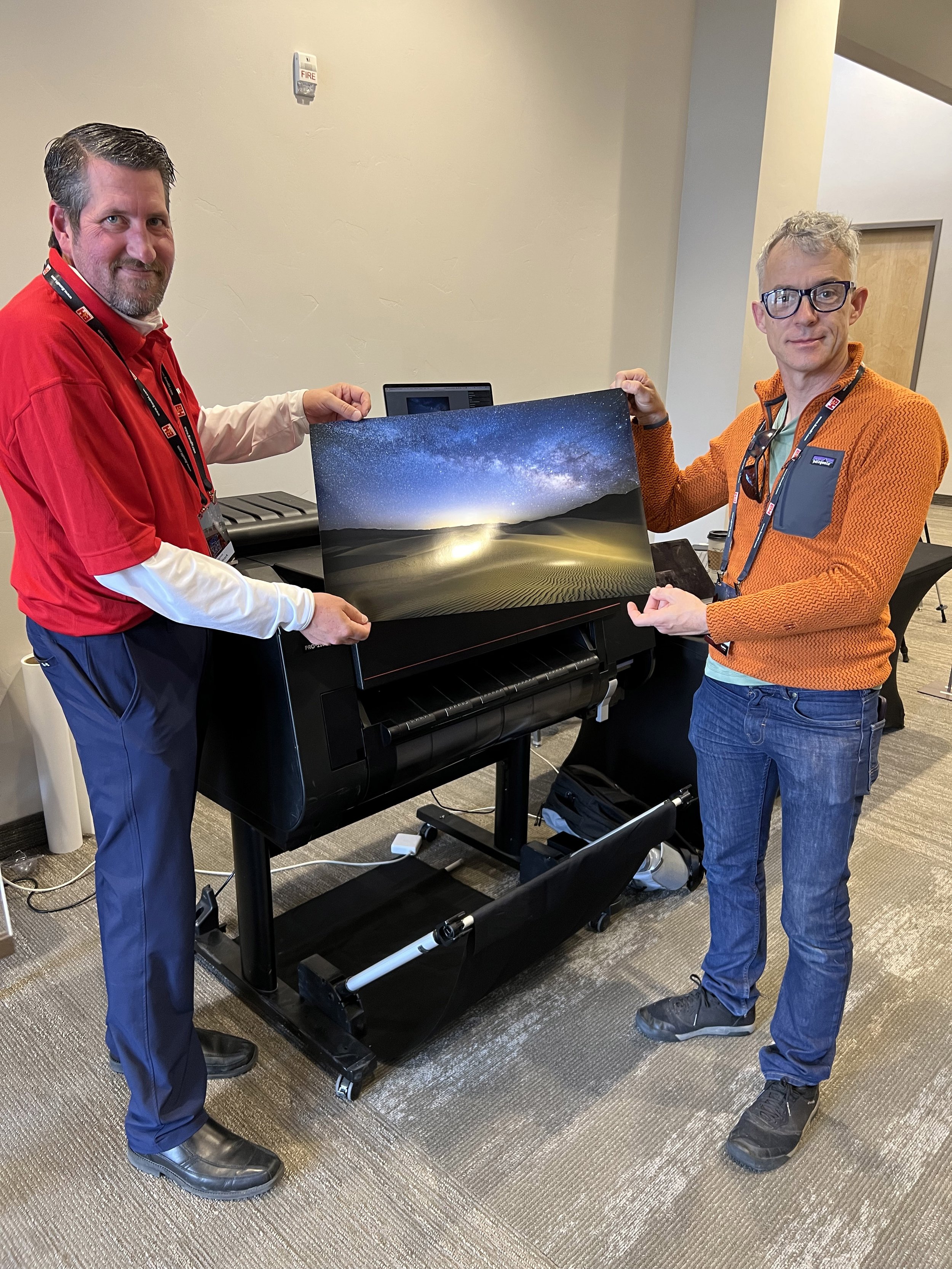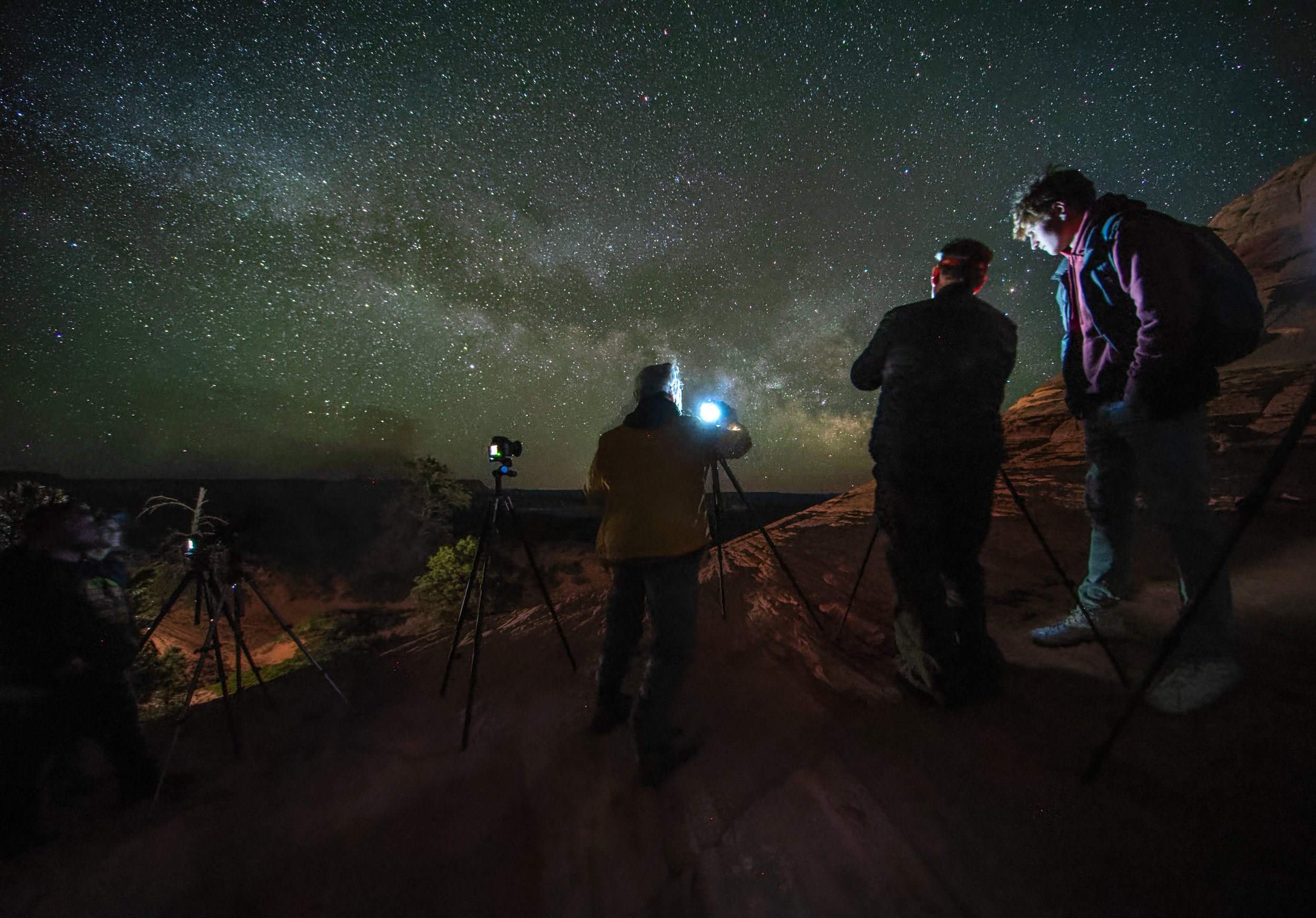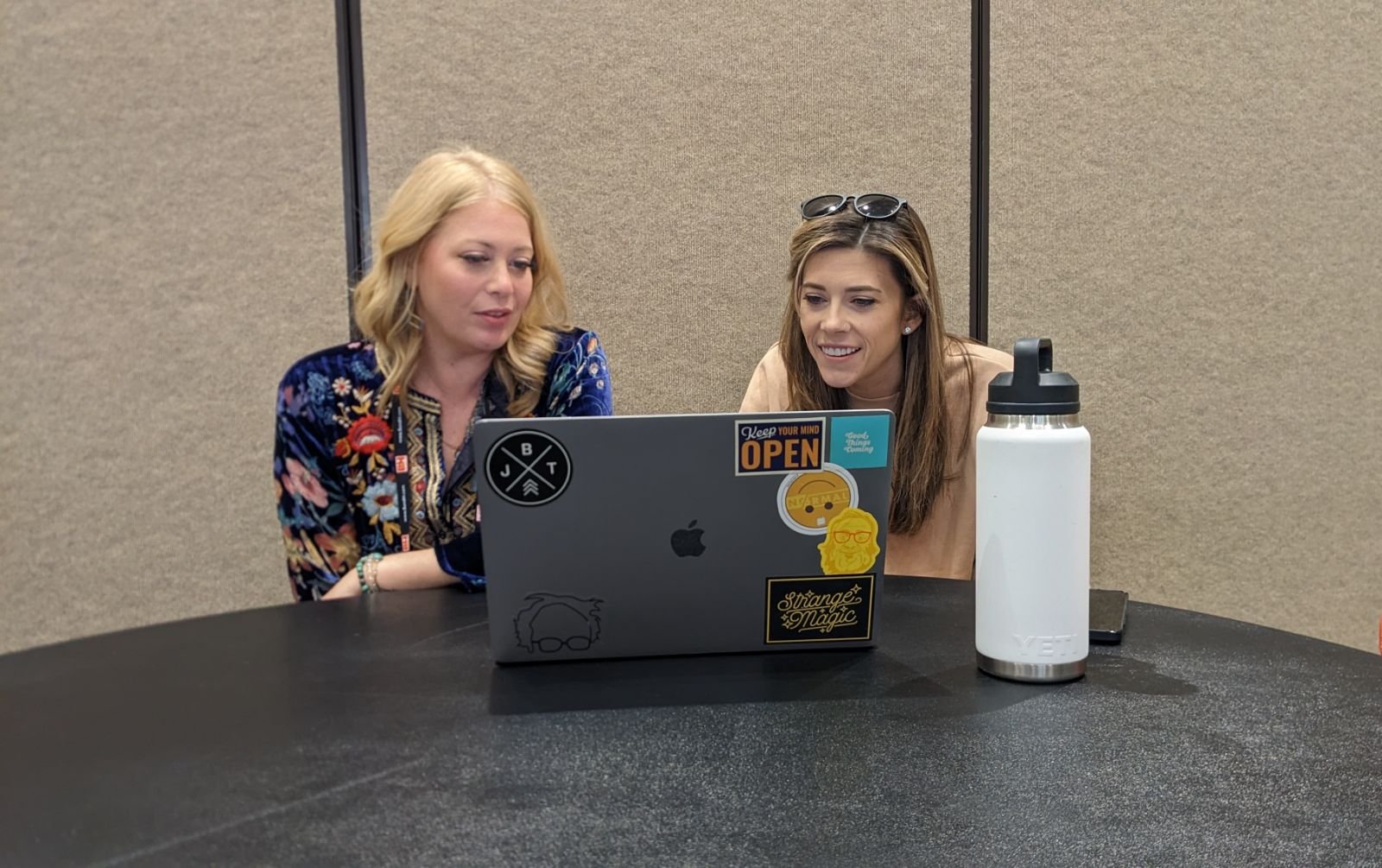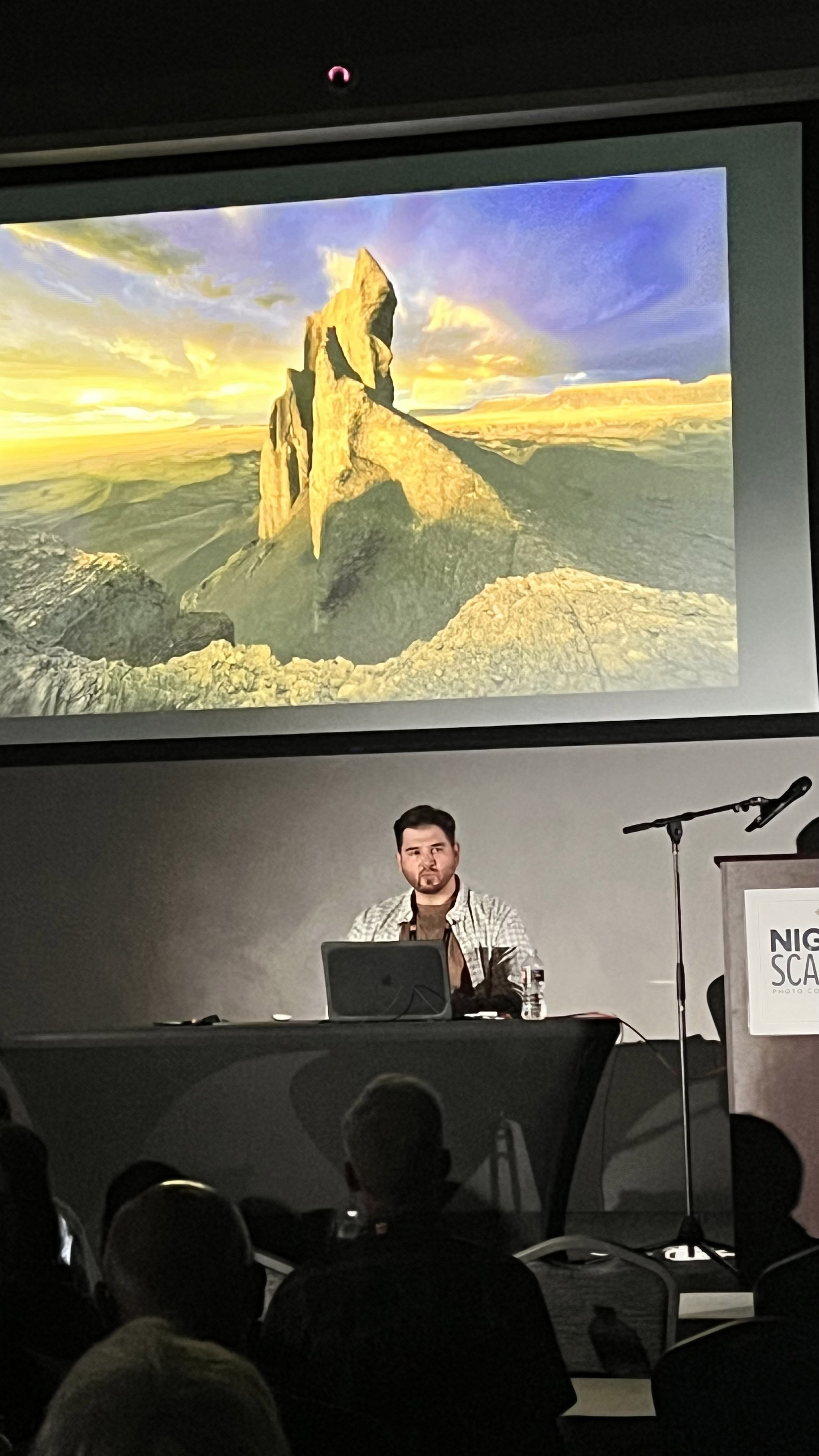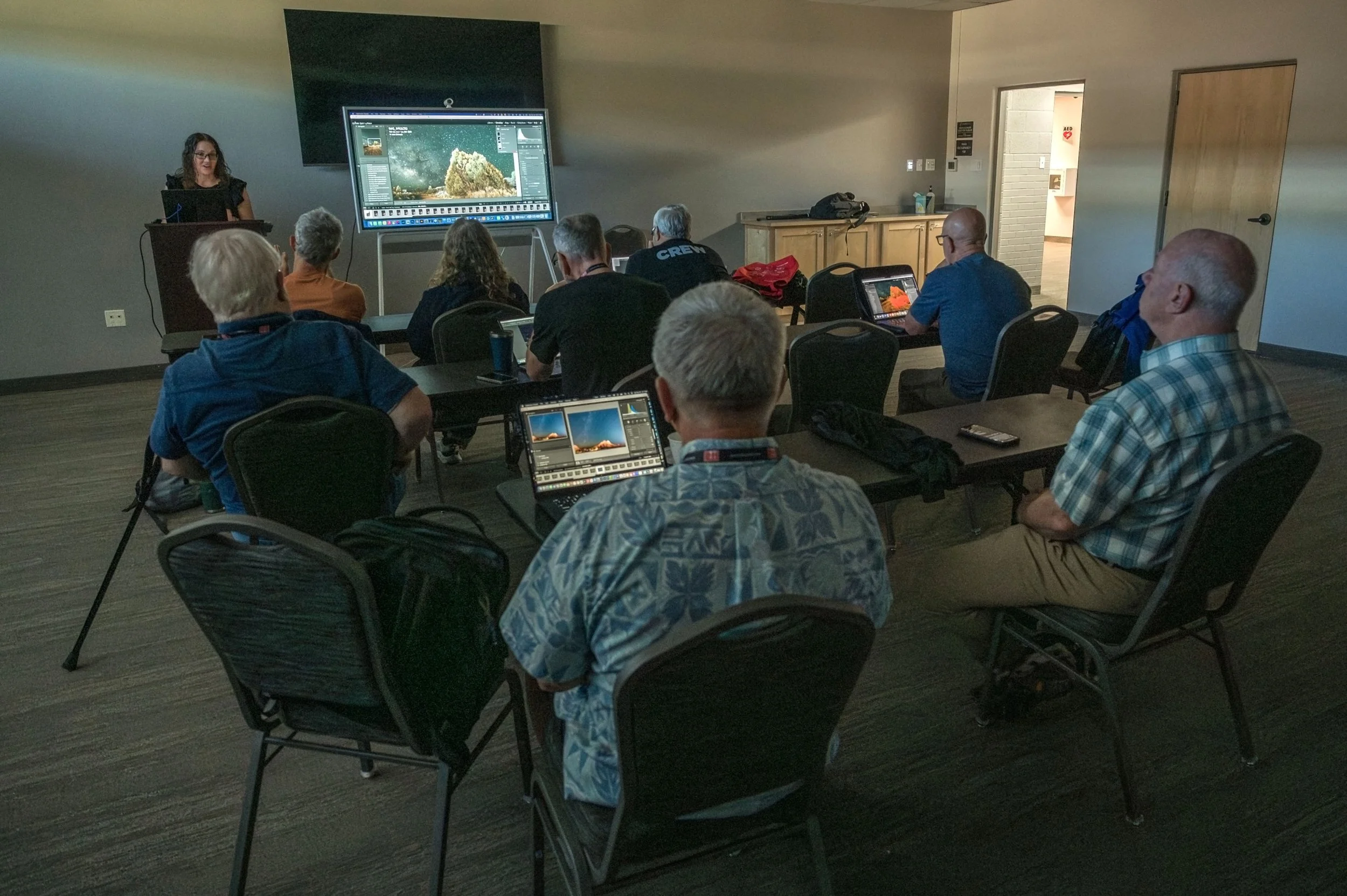We are ready to announce … Season 11!
As we enter the second decade of National Parks at Night, we are grateful to all our amazing alumni, conference attendees and fellow lovers of night photography. The adventures have been amazing, your friendship has been inspiring, and we are not slowing down.
Thank you for coming along for the ride. We look forward to another decade (at least!) of learning, sharing and growing together in wild, wonderful places at night.
Over the coming couple of years we will explore even more countries and landscapes, resting under more stars than you can count, each of them awaiting your cameras, lenses and tripods. So come with us—adventure awaits.
New Workshops
For Season 11, we are offering 29 workshops and tours, running in 2026 and 2027. We are returning to some of our “Greatest Hits”—Rocky Mountain National Park (in winter!), Ouray (for a panorama intensive!), Easter Island and more. Keep giving us feedback on your favorite places we’ve gone together, and we’ll make sure to return.
We are also finally checking off a few locations we haven’t been to before but that have been highly requested, including the otherworldly landscapes of the Atacama Plateau and the desert photographer’s playground of Namibia. Keep sharing where you want to go with us and we’ll do our best to take you there.
Rocky Mountain National Park. © Chris Nicholson.
Rust & Ruinism. © Tim Cooper.
One of the big pieces of night photography news the past few years has been the awesomeness of the current solar maximum. As long as the night sky giveth, we’re ready to taketh (with gratitude)! So we’re heading back to two of our favorite locations that have epic landscapes to mingle with the dancing green lights: the Lofoten Islands and Westfjords, Iceland.
Are you hooked on eclipses like we are? Two big ones are happening over the next two years, and we’ll be on location for both: For the eclipse of 2026, we’ll be camping in Iceland’s Hornstrandir Nature Reserve and road-tripping through northern Spain. And in 2027 we’ll be heading to Egypt.
Ouray Panorama. © Matt Hill.
Catskill. © Matt Hill
In other celestial news, the Geminid Meteor Shower should be epic next year, peaking with no moonlight for a predicted yield of over 130 meteors per hour. We’ll have two groups taking advantage: in Monument Valley and Everglades National Park.
Then there is the thing we love the best, having you stamp your passport to new national parks. In addition to the parks already mentioned, next year we will be exploring the beautiful alpine landscapes of North Cascades, the towering trees and pristine coastline of Redwood, the cliff dwellings and landscapes of Mesa Verde, and the park our alumni voted on revisiting, Glacier.
Easter Island. © Lance Keimig.
Lofoten Islands. © Tim Cooper.
Intro to Night Photography
Finally, we’re back to the basics.
Perhaps you’ve been following what we do for years, but haven’t felt like you have the experience or confidence to go on one of our adventures. If this sounds like you, you’re in luck, because we designed a experience with you in mind.
Our Introduction to Night Photography workshop offers full immersion into the fundamentals of shooting in the dark, with six days and five nights of classroom and field instruction. You’ll learn the basics of camera settings and focusing at night, as well as techniques for high ISO short exposures to capture the Milky Way and long exposures for star trails. We’ll also teach how to photograph in urban areas under artificial lights.
We’ll do all this in one of our favorite places––Cape Cod––at the best time of year to visit.
Cape Cod. © Lance Keimig.
Whatever your skill level and wherever you join us, we look forward to sharing, celebrating and seizing so many more nights with you soon.
A Few Notes
How are Some Already Sold Out?
As a special thank you to those who attend our workshops, who sign up for our waitlist and who subscribe to our email list, every year we announce our itinerary to those three groups before “going public.”
This year, as usual, our community has committed very strongly to many of the workshops. (Our gratitude is infinite.) Because of that, 15 of our new workshops and tours sold out during the past week. Additionally, three tours were announced last year and sold out some time ago.
Still, as of press time, nine of our Season 11 workshops and tours have seats left, so it’s easy to join us in amazing places such as Namibia, Atacama Plateau, Ouray and more.
If you really want to go to one of those other places with us …
We Can’t say it Enough: Use the Waitlist
Spots open up for almost every workshop, and those spots always get offered to the waitlist first. If you see something you really want to attend and there are no tickets now, we urge you to sign up for the waitlist today.
Extra Gear, Anyone?
If there’s one commonality among everyone who attends our workshops and tours, it’s … well, it’s that we all like making pictures in the dark. But if there’s a second commonality, it’s that we could also use an extra piece of gear or two when we go on a night photography trip.
To that end, we are crazy-excited to announce a brand new brand partnership that will help you maximize your efforts on workshops. We are now partnering with Lensrentals, specifically to bring you a good discount on gear loans so that you can load up before a trip and maximize your creativity.
Want to try a brand new camera in Catskill? Need a telephoto for our trip to Rocky Mountain National Park? How about a tilt-shift for the Michigan Lighthouses workshop? You can get all of that and more for 15 percent off, just for being a National Parks at Night workshop attendee. More info will be sent after you register for a workshop.
Atacama Plateau. © Gabriel Biderman.
Seize the Night in Season 11
As we get ready to commence our tenth autumn, we’re looking forward to a winter break from travel, followed by an epic Season 11 full of adventures and stars.
Where will you be joining us? Wherever the destination, we look forward to seizing the night with you soon.

